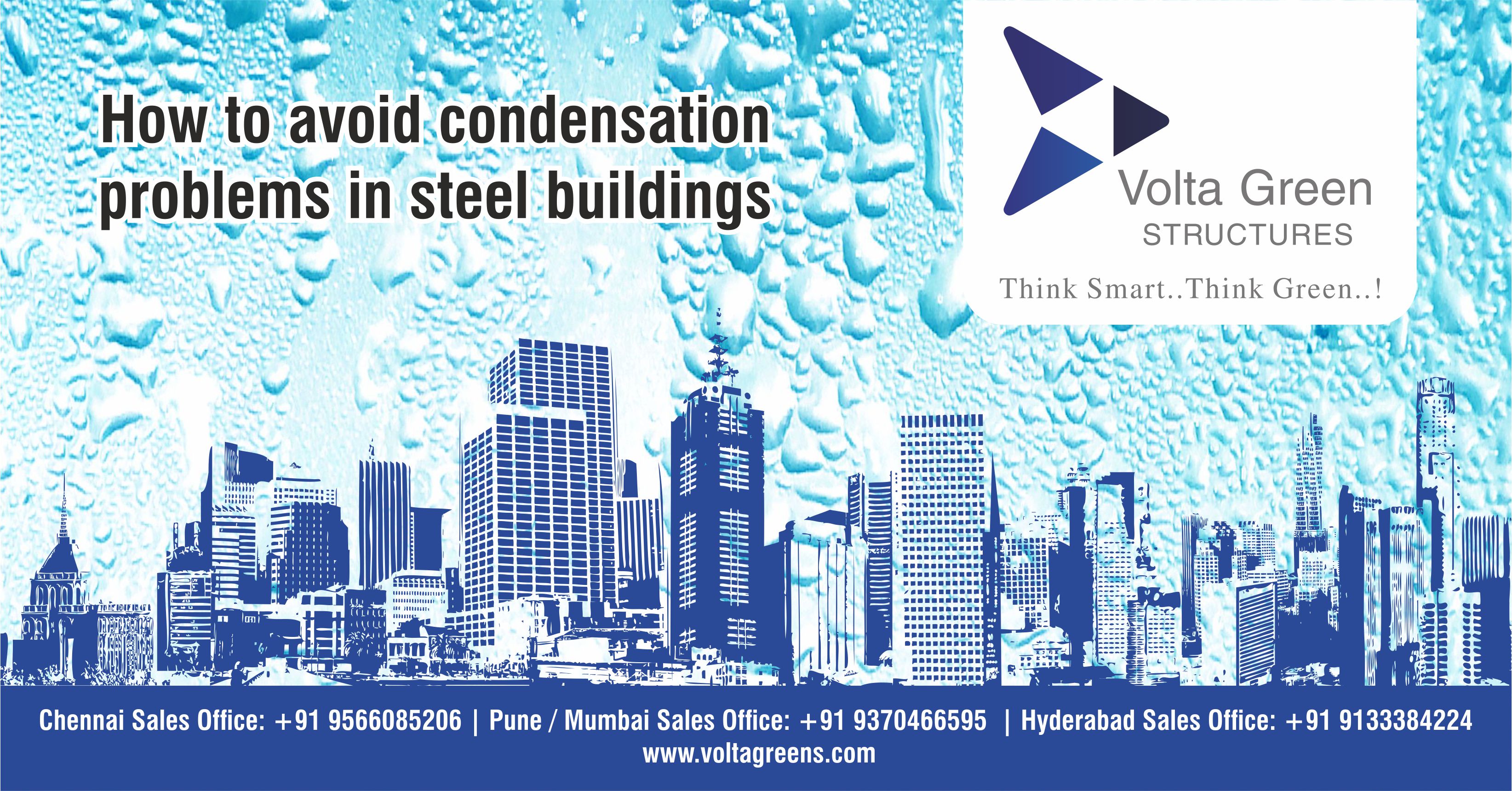How to avoid condensation problems in steel buildings
The entire world is moving towards pre-engineered steel buildings thanks to the many benefits that come with shifting to this new-age technology.
Organisations that have made the switch to pre-engineered steel buildings are able to enjoy the many benefits that the new technology has to offer. Chief among them being the huge savings in time and money in comparison to traditional structures. Pre-engineered steel buildings are also easy to assemble and disassemble and thus are absolutely crucial to organisations that are looking to expand and scale up their operations. Pre-engineered steel buildings are also better for the planet as there is less wastage of resources in the entire process.
However, along with the many benefits, there is one factor that organisations need to keep in mind – condensation in steel buildings. Condensation is brought about due to a number of factors, but is essentially caused when there is more moisture than the air can hold. While it might sound like a simple matter, condensation can cause a variety of problems for steel buildings.
Condensation occurs due to a number of factors. Improper construction techniques is one of the most common causes of condensation in steel buildings. Faulty or excessive heating and cooling systems could also contribute to condensation in steel buildings as they generate moisture when operated. Lack of adequate ventilation could also be a factor that leads to condensation in steel buildings. Apart from these factors, any other factor that causes excessive moisture vapour could contribute to condensation problems.
Condensation in steel buildings could cause a number of problems for organisations that have opted for prefabricated steel buildings. The most important effect is the corrosion of the building, drastically reducing the lifespan of the steel building. Condensation in steel buildings could also bring out infestations by insects, termites and rodents. Moulds and other unwanted growths could also pose health risks, especially to those with allergies. Condensation in steel buildings could also lead to inefficient heating and cooling due to the faulty insulation.
However, there are a number of ways that you can avoid condensation problems in steel buildings. The most important step to avoid condensation problems in steel buildings is to ensure that it is properly and efficiently insulated. Lack of insulation is a common reason for condensation in steel buildings. It is also imperative that the steel building has proper ventilation systems in place. If the building is stuffy, the chances of condensation are much higher.
Organisations using steel buildings should also ensure proper air circulation, so as to avoid condensation due to humidity and moisture in the air. While using the air conditioner, it is important that organisations use dehumidification measures. Ceiling vents could also help you avoid problems that arise from condensation. While these may seem as simple measures and steps, they can go a long way in helping you and your organisations avoid problems arising due to condensation.
Volta Green Structures is one of the leading innovators in the domain of pre-engineered steel buildings. Using state-of-the-art technology and softwares, we have been able to set extremely high benchmarks of quality for ourselves.
Our team of experts chart out designs that fit your exact needs, accurate up to 1 mm. These high levels of accuracy also helps organisations resort to customisation of their needs. Unlike traditional construction, steel buildings are able to provide a number of benefits to organisations that are looking to expand and scale up their operations. At Volta Green Structures, efficiency is at the core of our operations. Perfection, is only a by-product!








